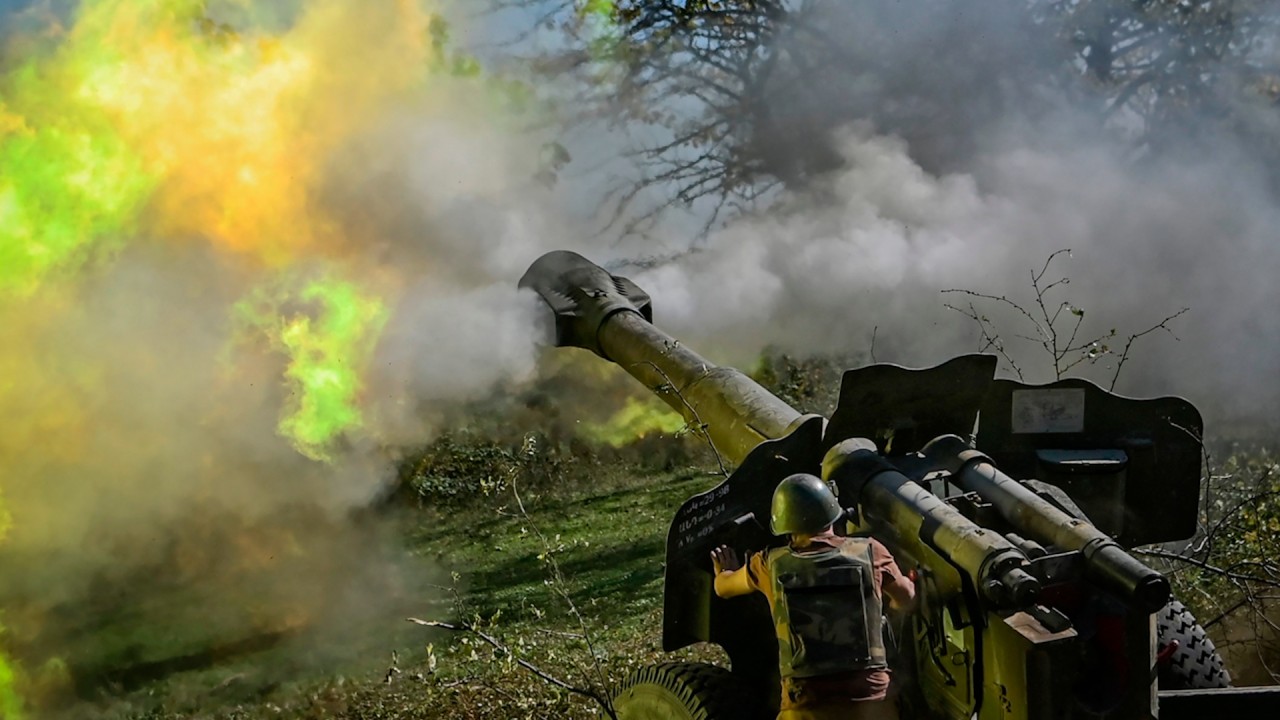
Armenia, Azerbaijan begin marking border as foes normalise ties after Nagorno-Karabakh conflict
- Last autumn, Azerbaijani troops recaptured the breakaway Nagorno-Karabakh region from Armenian separatists that ended a three-decade stand-off
- Last month, Armenian PM Nikol Pashinyan agreed to Baku’s demand to return 4 frontier villages that were part of Azerbaijan when it was part of the Soviet Union
Armenia and Azerbaijan announced on Tuesday they had started fixing their border, as part of normalisation efforts between the arch foes that had been locked in a decades-long territorial conflict.
Last month, Armenian Prime Minister Nikol Pashinyan agreed to Baku’s demand to return four frontier villages that were part of Azerbaijan when it was part of the Soviet Union.
The two countries reconfirmed last week to advance on border delimitation in the area based on Soviet-era maps – a decision that sparked protests among the residents of nearby Armenian villages.
On Tuesday, the two countries’ interior ministries announced the beginning of delimitation works on the ground.
What to know about the Azerbaijan-Armenia conflict in Nagorno-Karabakh
Azerbaijan said expert groups are conducting “clarification of coordinates based on geodesic study of the terrain,” while Armenia ruled out “the transfer of any parts of Armenia’s sovereign territory” to Baku as a result of the delimitation.
Fresh rallies erupted in Armenia following the announcement.
Dozens of protesters blocked the crucial Armenia-Georgia highway at several points, including near Lake Sevan and the town of Noyemberyan, close to the border with Azerbaijan, Armenian media reported.
The four abandoned settlements which are to be returned to Azerbaijan – Lower Askipara, Baghanis Ayrum, Kheirimly, and Gizilhajili – were taken over by Armenian forces in the 1990s, forcing their ethnic Azerbaijani residents to flee.
The residents of nearby Armenian villages fear they could end up isolated from the rest of the country, and some houses could fall into territory controlled by Azerbaijan.
The area has strategic importance for landlocked Armenia.
Several small sections of the highway to Georgia – vital for the country’s foreign trade – could end up in the territory to be handed back to Azerbaijan.
The delimited border will also run close to a major Russian gas pipeline, and the area has advantageous military positions.
Pashinyan has insisted on the need to resolve remaining border disputes with Azerbaijan “to avoid a new war.”
On Saturday, he said Russian border guards – deployed in the area since 1992 – will be replaced by Armenian servicemen.

“Russian border guards will withdraw from the area and border guards of Armenia and Azerbaijan will be cooperating to guard the state border on their own.”
He also called border delimitation a “significant change on the ground” as the two countries “now have a border and not a line of contact – which is a sign of peace.”
Last autumn, Azerbaijani troops recaptured the breakaway Nagorno-Karabakh region from Armenian separatists in a lightning offensive that effectively ended a bloody three-decade stand-off between the Caucasus neighbours over control of the mountainous region.
While both Pashinyan and Azerbaijani President Ilham Aliyev say a wider peace agreement is within their reach, lingering territorial disputes pose a constant threat of a fresh flare-up.

.png?itok=arIb17P0)
